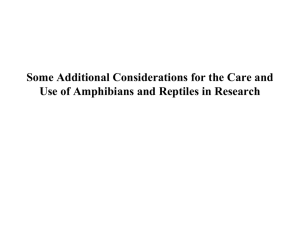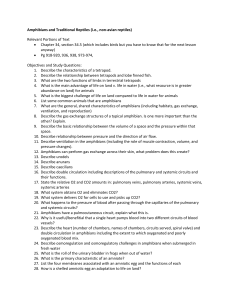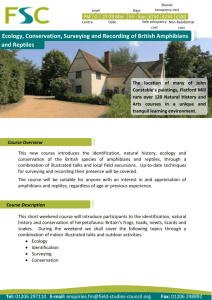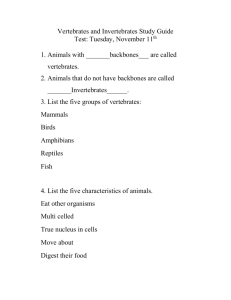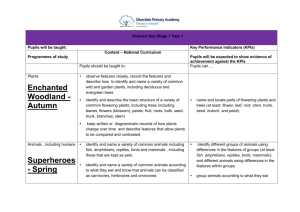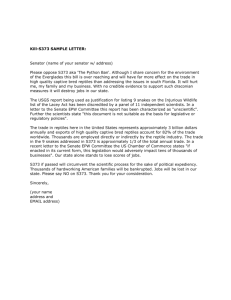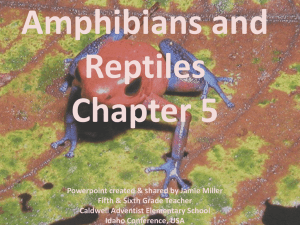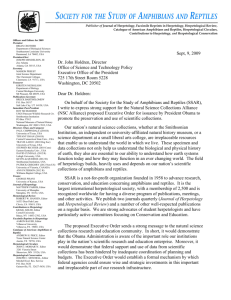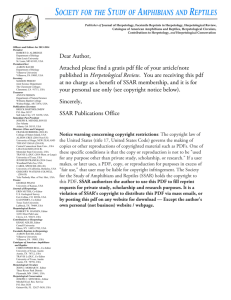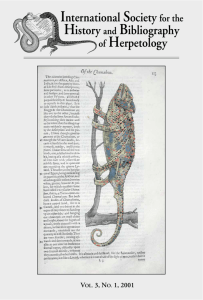michael-lambert
advertisement
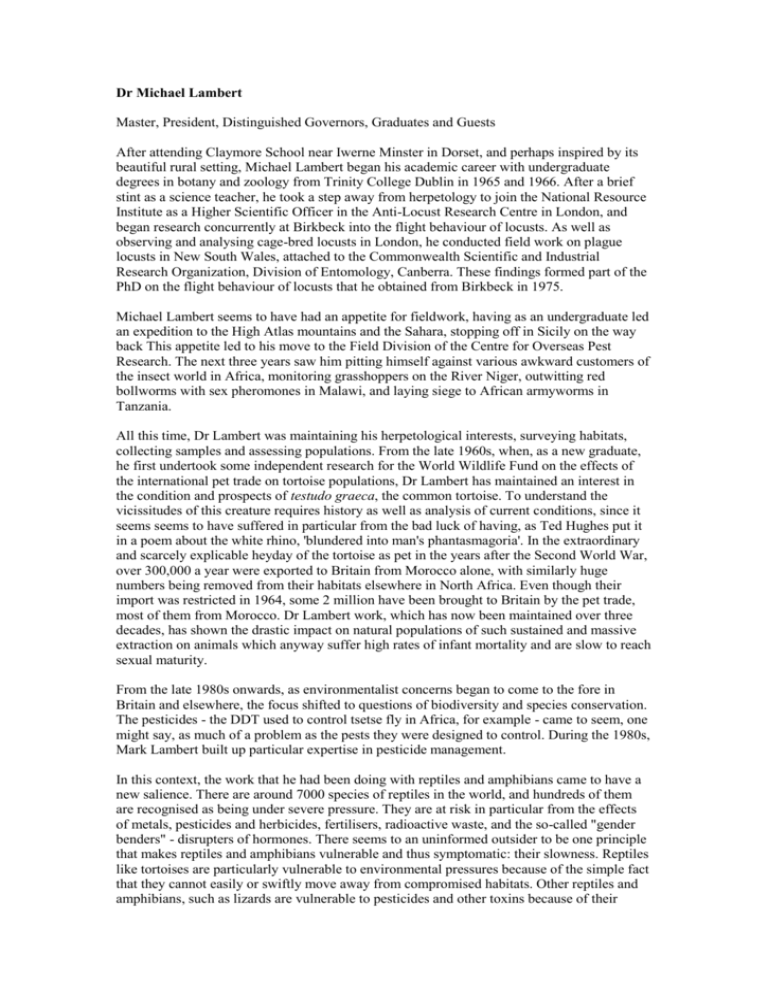
Dr Michael Lambert Master, President, Distinguished Governors, Graduates and Guests After attending Claymore School near Iwerne Minster in Dorset, and perhaps inspired by its beautiful rural setting, Michael Lambert began his academic career with undergraduate degrees in botany and zoology from Trinity College Dublin in 1965 and 1966. After a brief stint as a science teacher, he took a step away from herpetology to join the National Resource Institute as a Higher Scientific Officer in the Anti-Locust Research Centre in London, and began research concurrently at Birkbeck into the flight behaviour of locusts. As well as observing and analysing cage-bred locusts in London, he conducted field work on plague locusts in New South Wales, attached to the Commonwealth Scientific and Industrial Research Organization, Division of Entomology, Canberra. These findings formed part of the PhD on the flight behaviour of locusts that he obtained from Birkbeck in 1975. Michael Lambert seems to have had an appetite for fieldwork, having as an undergraduate led an expedition to the High Atlas mountains and the Sahara, stopping off in Sicily on the way back This appetite led to his move to the Field Division of the Centre for Overseas Pest Research. The next three years saw him pitting himself against various awkward customers of the insect world in Africa, monitoring grasshoppers on the River Niger, outwitting red bollworms with sex pheromones in Malawi, and laying siege to African armyworms in Tanzania. All this time, Dr Lambert was maintaining his herpetological interests, surveying habitats, collecting samples and assessing populations. From the late 1960s, when, as a new graduate, he first undertook some independent research for the World Wildlife Fund on the effects of the international pet trade on tortoise populations, Dr Lambert has maintained an interest in the condition and prospects of testudo graeca, the common tortoise. To understand the vicissitudes of this creature requires history as well as analysis of current conditions, since it seems seems to have suffered in particular from the bad luck of having, as Ted Hughes put it in a poem about the white rhino, 'blundered into man's phantasmagoria'. In the extraordinary and scarcely explicable heyday of the tortoise as pet in the years after the Second World War, over 300,000 a year were exported to Britain from Morocco alone, with similarly huge numbers being removed from their habitats elsewhere in North Africa. Even though their import was restricted in 1964, some 2 million have been brought to Britain by the pet trade, most of them from Morocco. Dr Lambert work, which has now been maintained over three decades, has shown the drastic impact on natural populations of such sustained and massive extraction on animals which anyway suffer high rates of infant mortality and are slow to reach sexual maturity. From the late 1980s onwards, as environmentalist concerns began to come to the fore in Britain and elsewhere, the focus shifted to questions of biodiversity and species conservation. The pesticides - the DDT used to control tsetse fly in Africa, for example - came to seem, one might say, as much of a problem as the pests they were designed to control. During the 1980s, Mark Lambert built up particular expertise in pesticide management. In this context, the work that he had been doing with reptiles and amphibians came to have a new salience. There are around 7000 species of reptiles in the world, and hundreds of them are recognised as being under severe pressure. They are at risk in particular from the effects of metals, pesticides and herbicides, fertilisers, radioactive waste, and the so-called "gender benders" - disrupters of hormones. There seems to an uninformed outsider to be one principle that makes reptiles and amphibians vulnerable and thus symptomatic: their slowness. Reptiles like tortoises are particularly vulnerable to environmental pressures because of the simple fact that they cannot easily or swiftly move away from compromised habitats. Other reptiles and amphibians, such as lizards are vulnerable to pesticides and other toxins because of their 2 permeable and highly vascularised skins. Lizards and amphibians also seem to lack the necessary enzymes to digest or break down pesticide residues as quickly as warm-blooded vertebrates. It had for some time been becoming clear to him not reptiles and amphibians might be more than just the victims of environmental contamination; and that studying the populations and conditions of reptiles and amphibians could provide strong and sensitive bioindicators of pesticide contamination and levels of pesticide entering food chains. Dr Lambert had in fact begun to develop a new kind of science, which he would come to name ‘applied herpetology’, or the use of reptiles as indexes and alarm-systems for pollution levels. Nobody could accuse Mark Lambert of being slow over the ground. By 1990, there was scarcely a country in the world where he could not at one time have been spotted counting lizards or assessing the chelonian population. The 1990s saw him sprinting untortoiselike as energetically as ever round the world, though now his focus was more on disseminating the nature and possibilities of the science of applied herpetology than on the conduct of the primary research. He was to be heard in Israel, the USSR, India, China and all over Europe, and was busy setting up joint projects and coordinating herpetological research. In August 1997, at the 3rd World Congress of Herpetology in Prague, Dr Lambert proposed the formation of a new journal to aggregate and encourage work in the new field his own research had marked out. The field of applied herpetology was formally defined at the next World Congress in Sri Lanki two years ago as those studies of amphibians and reptiles that concern human interests or the results of human interference in natural systems. There was no more natural person to appoint as Editor-in-Chief of the new Journal of Applied Herpetology, which published its first issue earlier this year, than Dr Lambert himself. Subscribers would have been able to read in it of the ecotoxicology of frogs, leaf litterbugs, crocodilians and the marvellously-named hellbender salamander, with which I cannot resist detaining you. Hellbender salamanders, which have attracted a number of other unflattering names, like the 'Allegheny Alligator' and 'Devil Dog' , can reach a length of 2½ feet and live for 25 years. Belying another of their names, the 'mudpuppy', hellbenders are in fact very clean-living creatures, spending their lives in fast-flowing, heavily-oxygenated streams with rocky bottoms. They breathe through their skins, the highly-permeable condition of which makes them extremely vulnerable to the absorption of pollutants; they are also highly sensitive to such processes as sedimentation, which reduces the oxygen levels in the water. The high sensitivity of the hellbender salamander seems to have caused a dramatic decline in its numbers, in places such as the Ozark mountains of Missouri and Arkansas Applied herpetology has implications that go well beyond the use of reptiles and amphibians as ecotoxicological beacons. It also investigates human attitudes and behaviour towards reptiles and amphibians and their comparative uses in different cultures. Another sphere of application is with the pharmaceutical uses of amphibians and reptiles as sources of antibiotics, analgesics and anticoagulants. Frogs and toads have often of course been thought to have magical or powerful properties in folklore; one need only think of the 'charm of powerful trouble' brewed up by Macbeth's witches. Perhaps you remember the recipe: 'Fillet from a finny snake, In the cauldron boil and bake, Eye of newt, and toe of frog, Wool of bat, and tongue of dog, Adder's fork, and blind-worm's sting, Lizard's leg, and owlet's wing'. Unknowingly, the witches were on the pharmaceutical button; in the 1960s, it was discovered that, not 'fillet from a finny snake', but certainly venom from a Brazilian pit viper, or bothrops jararaca, which has the effect if it bites you of permanently reducing your blood pressure to zero, could be used to produce captopril which is now the preferred treatment worldwide for high blood pressure. Mark Lambert's work has been formative, not to say inspirational for the new field of applied herpetology; with its view of human and natural species as mutually constitutive rather than 3 distinct or antagonistic, it is a template for new kinds of collaboration between biologists, ecologists, pharmacologists, even ethnographers and cultural historians. He has held many important positions in the world of zoological science. E was the chairman of the British Herpetological Society from 1982 to 1991 and is General Secretary of the Societas Europaea Herpetologica. In 1997, the reach and importance of his work was recognised when he was elected as a Fellow of the Institute of Biology. For his sustained contributions over three decades in so many fields, as entomologist, herpetologist and environmentalist, we honour him today. We are proud to number him among our alumni and delighted to welcome him today as a Fellow of Birkbeck.


